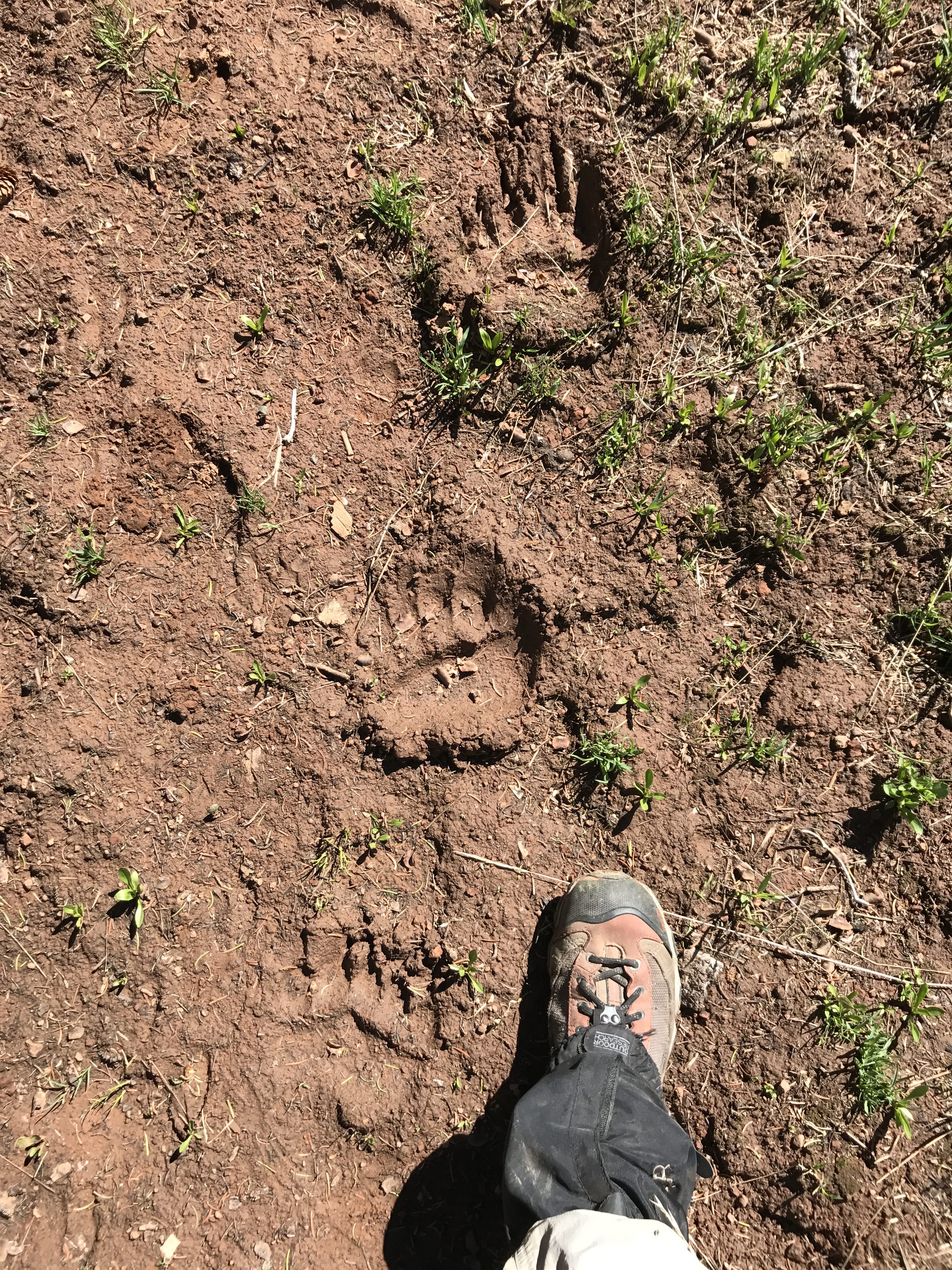
A Bear Dilemma, Clearly
On the day of the above photograph, Eric and I had been backpacking 20 miles across the Continental Divide, up and down the ridgeline and drainages of the Centennial Mountains that create a natural border between Montana and Idaho, before looking down and seeing these grizzly bear tracks. The Centennials do not kid around. And while they make up one of the few ranges going east to west in the Rockies (instead of north to south), the trail along much of their spine is anything but the straight line that maps make it out to be. We were pooped and looking for a place to make camp. Then these grizzly bear tracks showed up, along with warm scat, green and freshly gleaming.

The nearby presence of at least one grizzly spooked us into hiking another five miles, huffing it up another steep face and over a saddle to camp higher and farther away from any signs of grizzlies. We ended up camping under some of the area’s most dramatic trees, and I collected a fence of dead-fall as to ensure that, if a grizzly did saunter by, the bear would at least announce itself with branches snapping under foot. Several blogs and outdoor websites have dedicated articles to practicing bear-conscientious camping (#goodbearhavior), and for good reason: it keeps bears from mauling humans. While clearly a worthwhile concern, this is not the only dilemma for us to be aware of, nor should it be considered the main dilemma.
A Clear Dilemma For The Bear
When we practice lazy outdoor behavior and ignore Leave No Trace principles, bears suffer the most. Foreign odors attract bears, some of the most naturally curious among us animals, to where people leave out or behind food and waste. If bears learn to associate humans with easily attainable food sources, then they will stop foraging in their natural environment and start shrinking the safe distance between their world and our human world. Next thing we know, a bear mauling gets reported and that bear is tracked and killed.
For example, on paper, Yellowstone likes to remind guests that we are visitors to these animals’ home. But in practice, when a bear acts naturally in its own home and a visitor ends up hurt or killed, the bear suffers extermination. In practice, a more accurate label for us would be invaders.
Of course, not every mauling is due to this pattern. But every preventable mauling is. Essentially, if we are not careful and thoughtful, we are baiting bears to inevitably get killed — a 365 day hunting season with no lottery and no cap.

A Dilemma For The Bear And For The Hiker
What Earth is there left for the grizzly?
Before we showed up, grizzlies were the apex predator of the plains. We now associate them with mountain wildernesses, not because the mountains are their natural habitat, but because mountains are the only places left for them to live. We have taken their land of promise. Displaced and desperate, grizzlies somehow eke out an existence among the rocks and cliffs.
But even their trails they have forged for themselves in the desolate extremes of Earth have been taken over by recreational hikers and backpackers. What I consider our biggest dilemma comes into focus: are we outdoor enthusiasts invading the last place the grizzlies have left? We took their plains and pushed them into the mountains, but as outdoor recreation gains in popularity, where else do grizzlies have to go?
The Centennial Mountains are one of the most important habitats grizzlies still have, cited as a potential corridor between the Greater Yellowstone Ecosystem and the Selway-Bitterroot wilderness leading up to the Yaak and Rocky Mountain Front of northwestern Montana and Canada. It’s as if we’ve removed all of their roadways but one. And now that we’re travelling more and more on their one route left, we should consider the ethics of sharing that road.


Reggie Baldwin
January 13, 2018Great article, I love searching for bears Yellowstone and absolutely love that they are at least safe in the park.